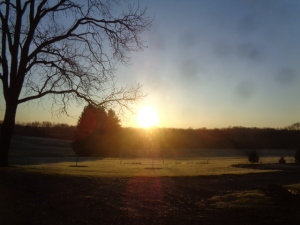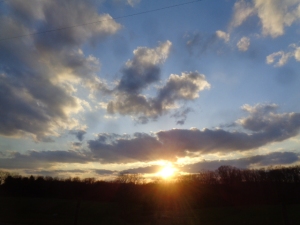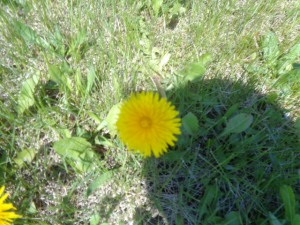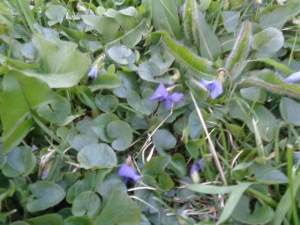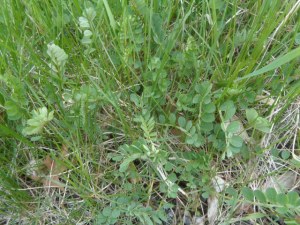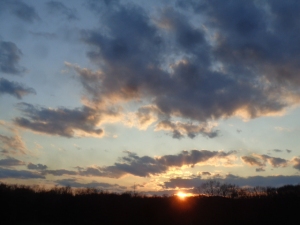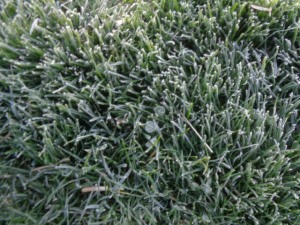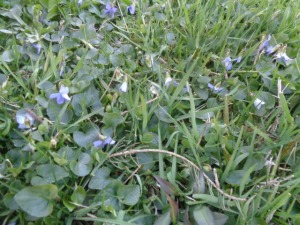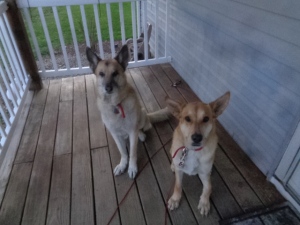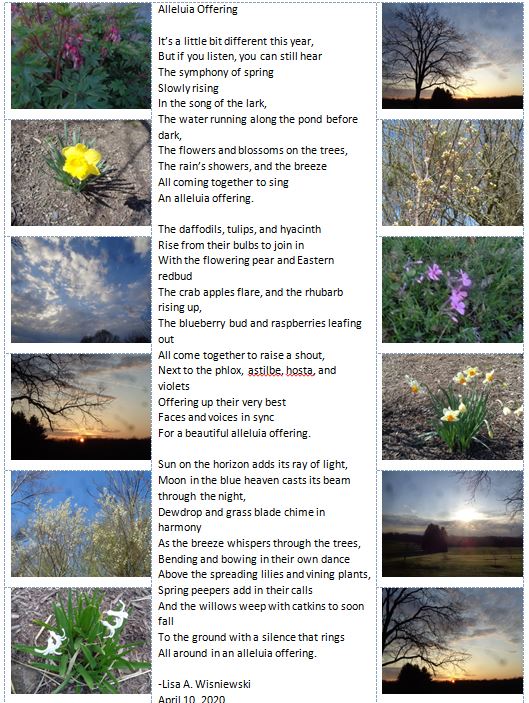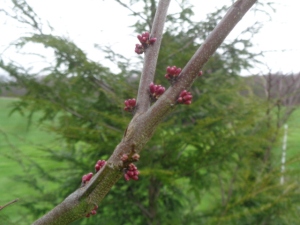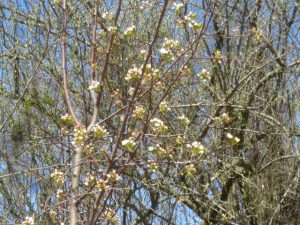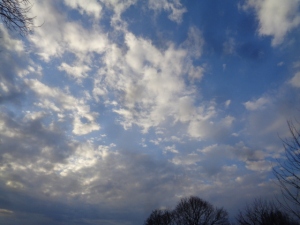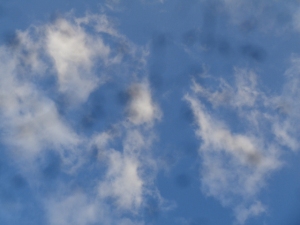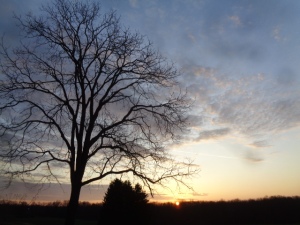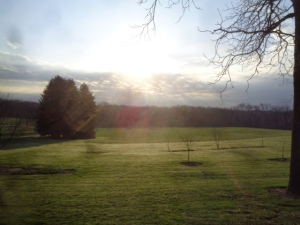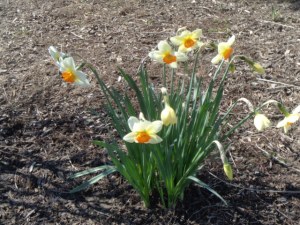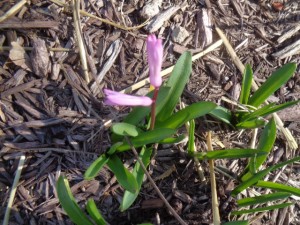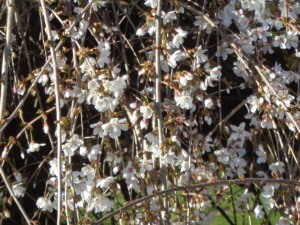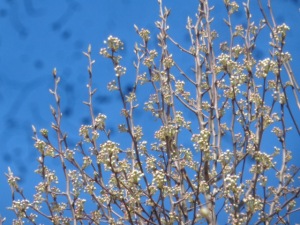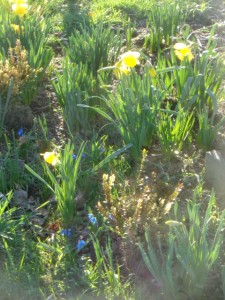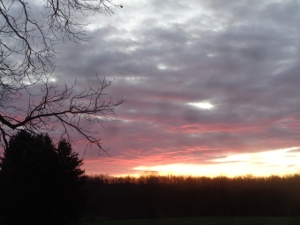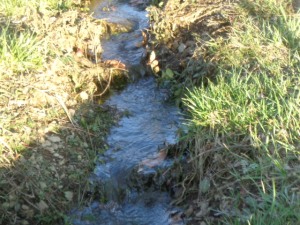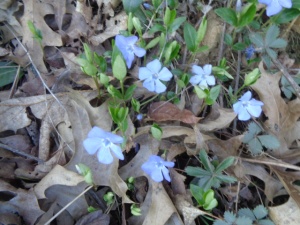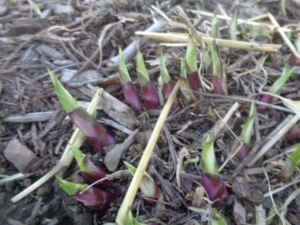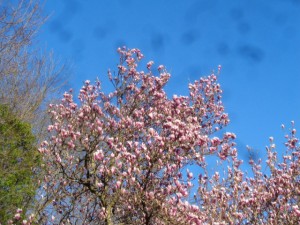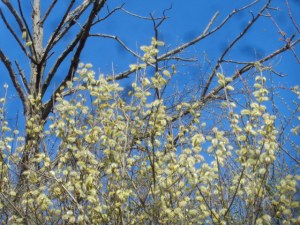
Providing Skies Lisa A. Wisniewski
Our activities this past week have provided us with a number of lessons through nature experiences. From watching the sunrise to digging in the landscape beds, we have seen and learned a great variety of art and science concepts ranging from the primary colors to the erosion process. Our adventures and activities reinforced something I discovered many years ago as a youngster: nature is one of the greatest teachers in and of life. These lessons may be easy or hard, simple or complex, seen or unseen, yet they exist and are there to help see us through life.

Change Starts Here Lisa A. Wisniewski
“You can’t go back and change the beginning, but you can start where you are and change the ending.” –C.S. Lewis
Sunrise Coloring Time
We’ve had some beautiful sunrises this past week, all of which were full of color to brighten the skies and the landscape reflecting the light. Seeing the sunrises reminded me of lessons learned in art class regarding the primary colors— red, yellow, and blue. These colors are primary colors because they cannot be made from any other colors. Red, yellow, and blue are the source of all other colors.
Secondary colors are created by mixing two primary colors together. The secondary colors are orange, green, and violet. Orange is created by mixing red and yellow. Green is made from yellow and blue. Violet is made from blue and red.

Sunrise April 22, 2020 Lisa A. Wisniewski
As with many concepts regarding art and science, there is a different perspective or theory of the primary colors. Part of the reason for this is regarding different ways of mixing color. These different ways are called subtractive color mixing and additive color mixing. Subtractive color mixing occurs when using paint or ink. Paints and inks reflect light, and thus when combined, typically produce duller colors. Additive color mixing is done using light as the color source. Light is an emitter or radiator, as opposed to a reflector. Mixing different colors of light together produces more light.
Now for the difference in primary colors when using light as the source. Sir Isaac Newton discovered that mixing red, green, and blue light from a rainbow reflected through prisms and mirrors created white light. Newton called these colors primary because they appeared to be the ingredients necessary to produce clear, white light. Each addition of light produced a brighter color. Red and green light produce yellow light. Red and blue light produce magenta light. Green and blue light produce cyan light.

Additive Color Example Lisa A. Wisniewski
Now for a bit of a twist to all the above. The colors seen in the sunrise (and the sunset) are due to the light being emitted by the sun and the angle at which the light appears on the horizon. There are also factors in the amount of molecules in the air (moisture, pollution, etc.) that have an impact on the colors we see. Add to this the human eye capacity for detecting color, and you have an awful lot of science going on in viewing one sunrise.
For more details on primary colors, check out this article.
“Sunlight is painting.” –Nathaniel Hawthorne
Diggers Beneath the Skies

Thistle Whose Roots Run Deep Lisa A. Wisniewski
We spent a number of hours this past week weeding and edging around the garden and landscape beds on our property. Our activities allowed us to see what is going on in the earth below. We found a variety of plant root systems and decayed matter, along with a number of worms and grubs as we dug
The variety of plant root systems ranged from the long, white roots of the dandelion and thistle to the shallow surface roots of the clover and grasses. Roots of the dandelion and thistle run straight down, whereas those of clover and grass run laterally along the earth’s surface.

Worm and Grub Mecca Lisa A. Wisniewski
The worms we found closer to the surface of our digging. We noticed the earth around the worms was riddled with tiny pinholes. These pinholes are the result of the worms moving through the soil. As they move, the worms create little pockets or tunnels. These tunnels help to aerate the soil, allowing nutrients to flow more freely to the roots of plants. The aerated soil also is less prone to bacteria and fungus, as the holes create airflow underground.
Seeing the grubs reminded us that they are a vital part of the food chain in nature. Grubs are food for moles, birds, raccoons, and skunks. Moles are food for a variety of birds and smaller animals. Each creature adds to the food chain and cycle of life. So, like many other processes in life, the smaller details add to the complete picture, and each detail is a step in a process that takes time to mature.
Once again, a lot of science going on in the one aspect of the soil, and many lessons to be observed, learned, and remembered for years to come.

Reality to Experience Lisa A. Wisniewski
“Life is not a problem to be solved, but a reality to be experienced.” –Soren Kierkegaard
Really? Oh, My!
Sadie provided us with several great lessons this evening as she came across a skunk down by the pond. I was transplanting a tree on the hill above the pond when I heard Sadie bark. Looking up, I saw her squared off against the skunk. Her upper lip was curled, revealing her fangs, her back was arched, and she was ready to pounce.
“No, Sadie, no!” I yelled as I threw down the shovel and took off down the hill toward her and the skunk.
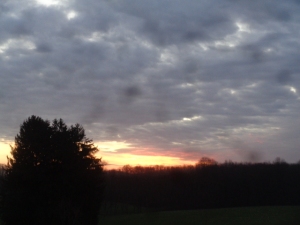
Shifting Skies, Omen for the Night Lisa A. Wisniewski
The skunk was obviously not happy, and there was no way Sadie was going to back down. I prayed as I ran that the skunk would not spray Sadie. The skunk shuffled backward. Sadie went to swat it with her paw.
“No, Sadie, no! Let it go!” I yelled as I came closer.
A faint but distinct smell then permeated the air. Oh, no!
Sadie swatted at her face with her paw. The skunk had sprayed her. Now she was mad. She whacked the skunk with her paw.
“Sadie, let it go! Sadie, LET IT GO!” I yelled as I came up behind her.
The skunk ran off toward the woods as I knelt down to examine Sadie. No cuts, bruises, or signs of injury, so that was a huge relief. By divine intervention, she only had a faint smell around her lower lip and face. Oh, thank you, God!
“Let’s go to the house. We need to get you a bath,” I said as we trotted off together.
Leo was waiting for us and eagerly sniffed at Sadie. He scrunched his nose when he detected the area near her lip that had the skunk’s scent on it.
“Don’t get too close, Leo,” I said, “Come on Sadie, let’s get you downstairs to the shower.”
Picking up the phone, I dialed my parents number. Mom answered. “Sadie found the skunk you were telling me about earlier,” I said.
“Hurry up and get her washed with tomato juice,” Mom replied.
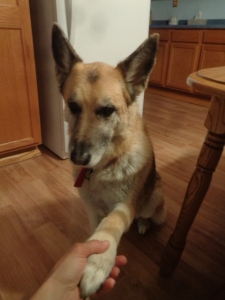
All Good Now, Mom! Lisa A. Wisniewski
I grabbed a can of tomato puree from the cupboard, opened it quickly, and watered it down. This would have to do since we did not have tomato juice in the house. Sadie handled the bath pretty well, though she was not fond of having the tomato concoction put on her. After rinsing off the tomato mixture, I checked to see if the smell was gone. It was. Oh, what a relief. I then bathed her with shampoo as a precaution because she had had a skin irritation prior and I did not want the tomato mixture to irritate her skin.
Then we bathed Leo, just to make sure the smell had not rubbed off on him when he examined Sadie. Of course, we had just cleaned all the carpets and hard floors in the house the night before, and had everything smelling nice and fresh, so now we had to go through the house and make sure the skunk scent was not anywhere else. God was good to us and we were able to get a slight smell out of the house with mist solution of vinegar and Dawn dish soap.
The dogs started barking, and I realized Mom was at the door. She brought a recipe my dad had written down for “skunk wash”. She also had the ingredients to the recipe, just in case I did not have them in the house. We reviewed the recipe together and I had all the ingredients:
1 quart hydrogen peroxide
¼ cup baking soda
1 teaspoon Dawn dish soap
Rub on dog and let sit for five minutes. Do again then rinse.
Since Sadie was still wet from her bath, I decided to wait a while before treating her with the skunk wash. Mom went home and I went for a run in the rain to clear my head. As I ran, I realized that though we did not need one more thing to do on our list for tonight, all that had transpired was not a total loss. We learned an awful lot in a short span of time, and though all the items on our to-do list would not get done, it was not the end of the world.

Calm Sea Lisa A. Wisniewski
I was surprisingly calm, and in reflecting on this realized it was because life happens and God and my dogs have done their share to help prepare me for incidents like this. Everything happens for a reason, and we may or may not know the reasons in this lifetime. Getting upset or worrying does nothing to get us any further ahead in life. The quicker we accept situations and circumstances, the quicker we can move on in our journey.
Returning home, I mixed up the skunk wash and treated Sadie’s face, as there was just a faint odor in that area. The house now smelled clean thanks to our homemade remedies and to a few open windows. While not all was well with the world around us, our little piece of life was livable.

Unlimited Broadcasting Station Lisa A. Wisniewski
“I love to think of nature as an unlimited broadcasting station, through with God speaks to us every hour, if we will only tune in.” – George Washington Carver
Winds of Time
One observation we have made over the past few years has been that of eroding soil in our yard and surrounding area. Erosion is caused by water and wind. Water running over the soil picks up particles. Continued cycles of this picking up of particles allow ruts to form in the soil, allowing the water to flow more freely, deepening the ruts. Given we have had record rainfall in our area going on three years in a row (over 57” in 2018, 52” in 2019, and currently at 14”, or 4” above normal for this year so far—normal rainfall is 38”), it seems the anomaly in the rainfall has helped with the erosion factor.
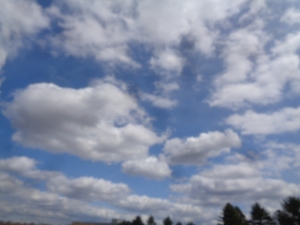
Winds of Change Lisa A. Wisniewski
The winds this week have been very high as well, blowing grass, trees, and pretty much anything in sight. Wind causes erosion similar to water, picking up particles of soil and other items in its path. The repeated process can in time lead to erosion and depositing of soil particles in other areas.
Combined wind and rain patterns can lead to rapid erosion. Our area has also seen a number of land developments with farms and larger tracts of land being converted to housing developments. The removal of trees, shrubs, and grass to create the housing developments has severely depleted the ability of the soil to soak up excess water. Without the root systems of the trees and plants to help remove the excess moisture from the soil, the soil becomes saturated, resulting in water runoff. The loss of the tree canopy has also left large portions of land more susceptible to wind erosion since the areas are now exposed and don’t have the root systems to help keep the soil intact.

Lifelong Process Lisa A. Wisniewski
As with other processes in nature, this did not happen overnight, and it cannot be corrected instantly. One thing we have been doing is using the weeds we pull and edging pieces of sod we remove to help fill in ruts and crevices in our yard. While this is also a process, it does help. Areas of the yard that were completely bare back in 2017 now can support grass growth this year. It is tedious work, but comes with the benefits of being outdoors, getting exercise, learning many life and science lessons, and seeing the beauty of nature from many different perspectives.
“The pessimist complains about the wind; the optimist expects it to change; the realist adjusts the sails.” –William Arthur Ward
New Finds
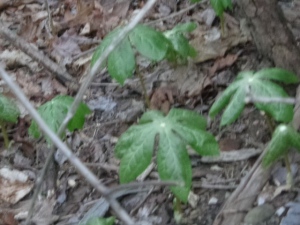
First Mayapples of the Season Lisa A. Wisniewski
Despite the winds and rain this week, we have tried our best to keep active and conquer the elements. Though most of my runs and bike rides have been wet, I have taken the attitude to persevere. My efforts have been rewarded with sights of the first skunk cabbage and mayapples in the underbrush of the trees along the roadside. While the skunk cabbage is not a cabbage and the mayapple is not an apple, both offer some neat facts:
- The floral sheath, known as a spathe of the skunk cabbage generated heat that in late winter can thaw frozen soil and melt a circle in the surrounding snow.
- The fetid odor of the skunk cabbage (hence its name) attracts flies and gnats, which pollinate the tiny flowers on the plant.
- May apples do not really appear in May, but rather in late April.
- The immature fruits, seeds, and all other plant parts of the mayapple are poisonous.
- Mayapples were once used as a powerful purgative.
Seeing these plants was a reminder that life and time are moving us onward, though current conditions in the world may make it feel otherwise. We are nearing the end of April and will be moving into May, which offers a variety of natural events to look forward to, such as the full moon on May 7, which will also be a supermoon and the blooming of additional flowers, trees, and shrubs adding color to the landscape.
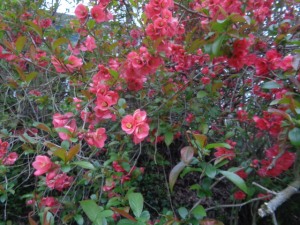
Always Something to Offer Lisa A. Wisniewski
Nature always has something to offer to us. It is our perspective toward what nature offers that determines the extent of the effects nature can have upon us.
“Life is a succession of lessons which must be lived to be understood. All is riddle, and the key to a riddle is another riddle.”-Ralph Waldo Emerson
May we allow ourselves to see nature in the many different forms it takes in our lives. May we be open to a variety of concepts and lessons it offers, and may we use these lessons learned to build stamina and strength from all nature provides.
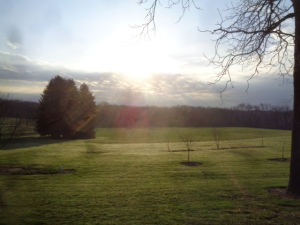
Green Sea Lisa A. Wisniewski
Nature Provides
Green sea of waving grass
Blowing the breeze as it comes to pass,
Rippling in waves across the meadow
As time sways in the sun’s glow,
Back and forth the reeds move
Undulating in the storm of the truth
Nature provides within its beauty
Of earth, sky, river, and stream.
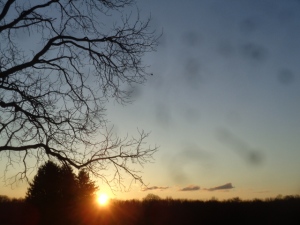
Sun in the Sky Lisa A. Wisniewski
Sun in the sky rising up
Filtering it slight to blade and bud
Warming the air and the soil
With a flare the never tires of its toil
Burning bright for all to see
Acting as a guide eternally,
Part of what nature provides day after day
Within life, be as it may.
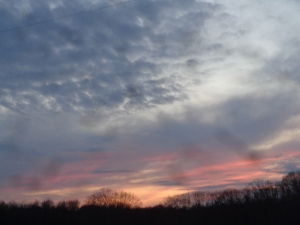
Sun, Wind, Rain and Earth Lisa A. Wisniewski
Sun, wind, rain, and earth
Run with time as it turns,
Weaving together to form
The many kinds of weather to endure
So that the cycles of life may continue on
Through each night and new dawn,
Impressing upon us all
The many blessings of its call
Hidden in all the nature provides
As time rises and falls within our lives.
-Lisa A. Wisniewski
A Note of Thanks
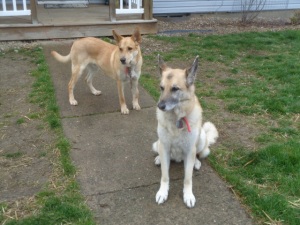
Thank You! Lisa A. Wisniewski
Our thanks this week goes out to God and nature for the blessings they both provide day in and day out. Thanks also to Sadie for her “investigative reporting” to add to this week’s post and to Leo for his help in editing the story. Thanks to Mom and Dad for offering up their knowledge to help us deal with our adventures this week and throughout life.
-Lisa, Sadie, and Leo
Resources and Related Links
Primary colors – https://science.howstuffworks.com/primary-colors.htm


